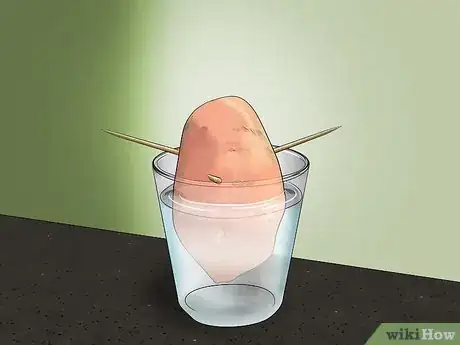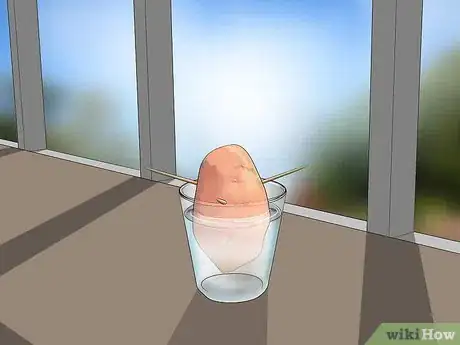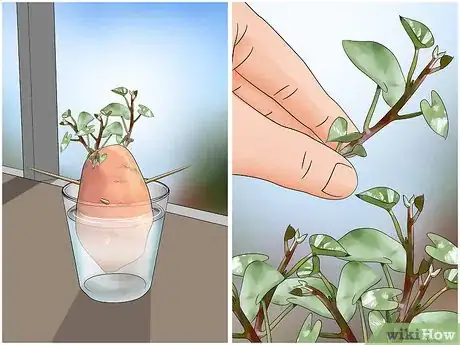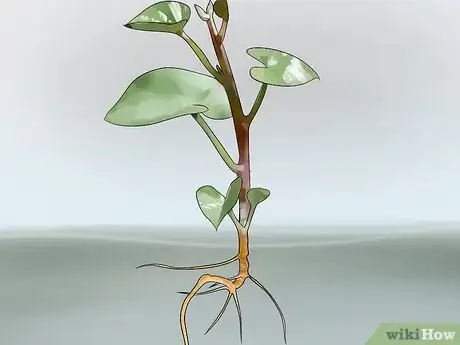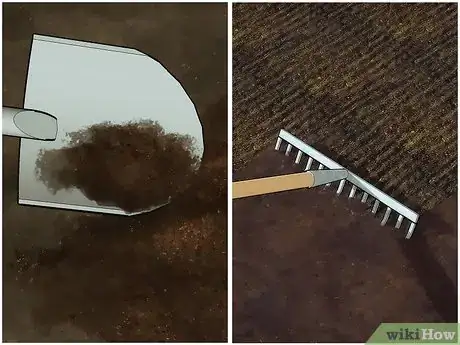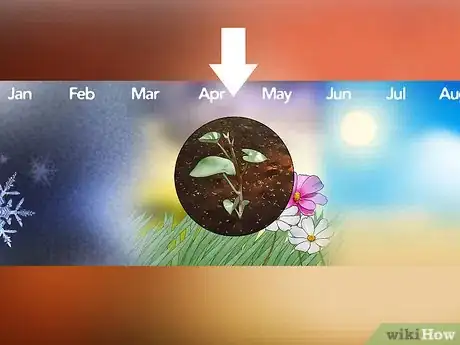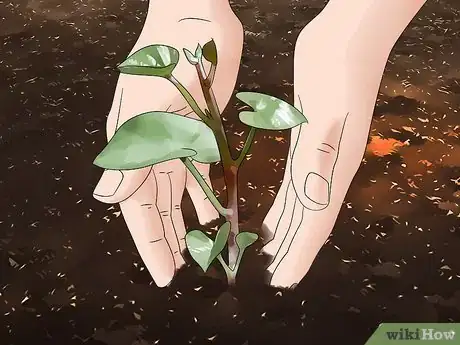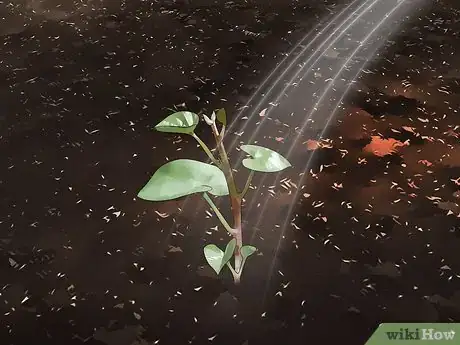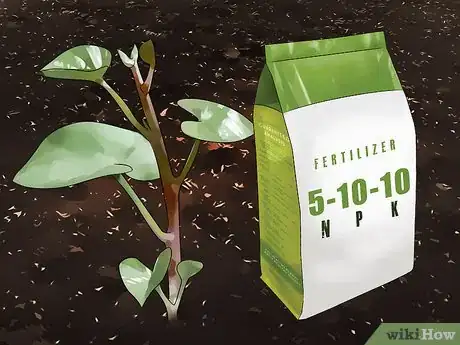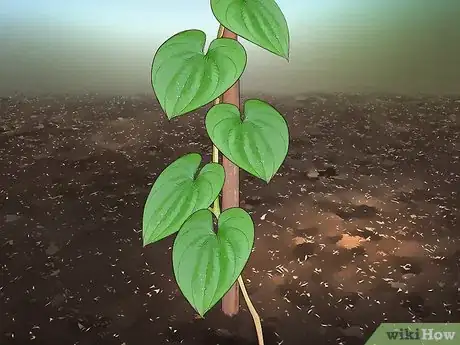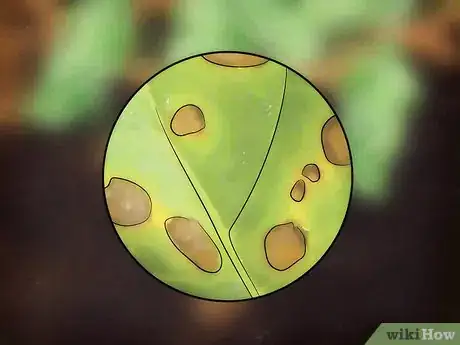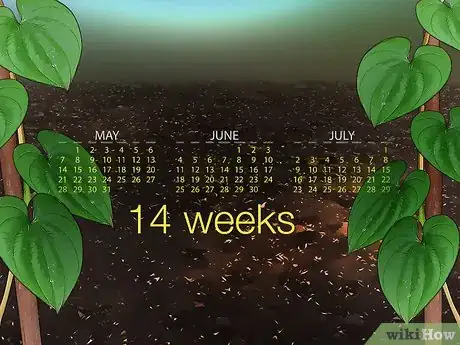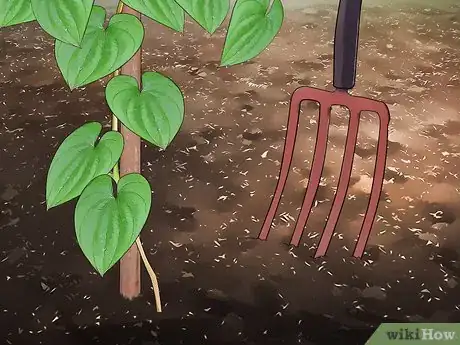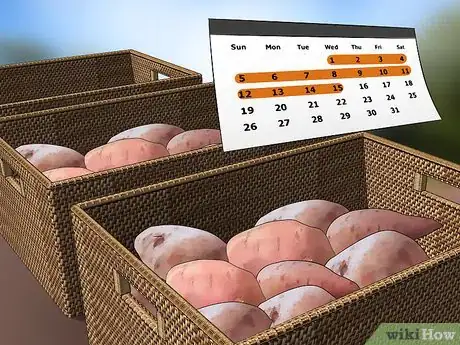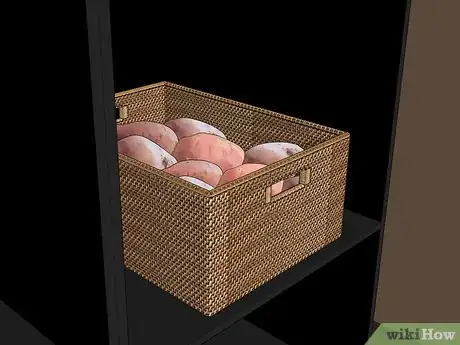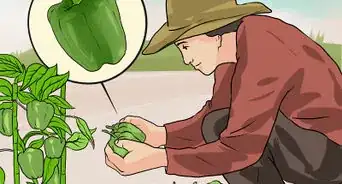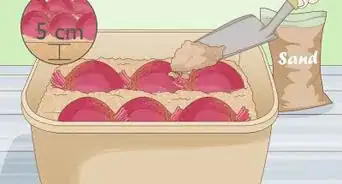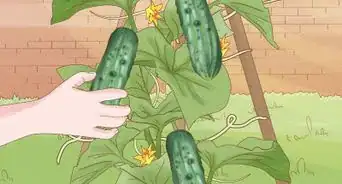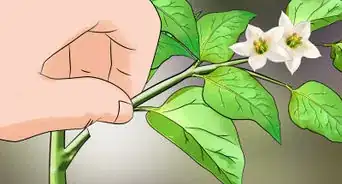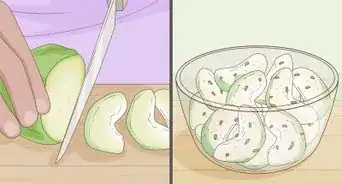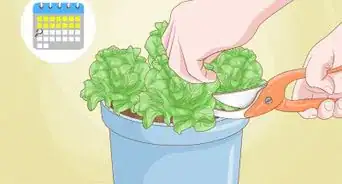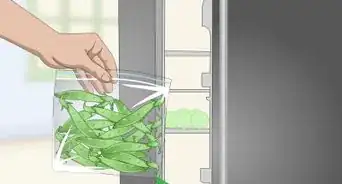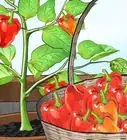This article was co-authored by Maggie Moran. Maggie Moran is a Professional Gardener in Pennsylvania.
There are 10 references cited in this article, which can be found at the bottom of the page.
wikiHow marks an article as reader-approved once it receives enough positive feedback. In this case, 92% of readers who voted found the article helpful, earning it our reader-approved status.
This article has been viewed 172,383 times.
Yams are delicious, healthy, and fairly simple to grow. While this particular crop tends to thrive in tropical climates, it is easy to grow yams in colder climates with the right planning and forethought. You can grow your own sprouts and slips to plant, and then grow, harvest, and cure yams.
Steps
Growing Slips For Planting
-
1Start growing the sprouts. Yams aren't grown from seeds like most other vegetables - they grow from slips, which are derived from the sprouts of adult yams. To grow sprouts, cut a yam in half and submerge one portion in a glass of cool water. Insert toothpicks at three points around the middle of the yam and suspend it over the container, half-submerged in the water.[1]
- Make sure the yam you choose looks healthy. If you notice discoloration or lesions on the skin, your yam could be diseased, which means its sprouts could be diseased, too.
- Choose a yam variety like TDA 291 or TDA 297 that is resistant to Scorch, a fungal disease that causes spots and lesions.[2]
-
2Keep the sprouts warm. The growth process requires warmth, so place the glass near a heat source. If possible, position the glass near a window so that the sprouting yam gets sunlight as well. Otherwise, place it near a heater to absorb warmth that way.[3]Advertisement
-
3Let sprouts develop. Refill the water in jars or glasses if necessary to keep the submersion level of the yam consistent. Wait for sprouts to form on the yam; this will take a few weeks. Once sprouts are leafy, take each one and gently twist it off of the yam.[4]
- Each yam can produce up to 50 sprouts.
-
4Root the slips. Lay each sprout in a shallow container, with the bottom half of the stem submerged in water. Allow the leaves to hang out over the rim of the container. Over the course of a few days, you should see roots emerging from the bottom of each sprout. When the roots are about an inch long, they are then slips that are ready to be planted.[5]
- Slips can also be purchased online.
Planting the Yams
-
1Loosen the soil. To ensure that the roots don't meet resistance as they expand, make sure that the soil is very loose and well-drained where you want to plant the yams. When the ground starts to dry in the springtime, till the soil approximately 8 to 12 inches deep and remove debris (i.e. rocks, root pieces, etc.). Spread compost or manure over the soil and till it approximately 8 inches into the ground, to improve the soil's structure.Rake the area, spray it with water, and let it sit for 2 or 3 days before planting.[6]
-
2Make space. Ensure that you have enough room to accommodate the slips that you'll be planting. Large tubers need a lot of space to grow, as do the vines of the plants, which grow vigorously. Ideally, you should leave approximately a meter of space between each plant.
-
3Wait for the right temperature. Yams do not grow well in cold temperatures, so it's best to wait until a few weeks after the last frost to plant your slips. Mid spring is the ideal time to do so. Yams require a long growing season, so don't wait too long into the spring or summer to get started.EXPERT TIPMaggie Moran is a Professional Gardener in Pennsylvania.Home & Garden Specialist

 Maggie Moran
Maggie Moran
Home & Garden SpecialistYams grow best in warm climates. Horticulturalist Maggie Moran says, “Yams are an easy plant to grow in the right conditions, and just a few plants can offer a good harvest. However, they require over 4 months of warm temperatures to reach maturity.”
-
4Bury the slips into the soil. Dig holes about 4" or 5" deep and 3" wide (approximately 10 or 12 cm deep and 7-8 cm wide). Place slips in the holes (dug about 8 to 10 inches apart), positioned with the roots pointing down and the leafy tops above the soil. Very gently fill the holes with soil, being careful not to jostle or bruise the slips too much.[7]
- Press soil down lightly to get rid of any air pockets.
Tending To Your Plants
-
1Water the plants generously. Newly planted slips should be watered every day the first week, every second day the second week, and less and less as they grow. Be generous in hydrating them but pay careful attention to the crop to avoid waterlogging. Yams thrive in sunlight, so if the soil gets dry, adjust the watering schedule accordingly.[8]
-
2Fertilize the plants. Use a fertilizer during the growth period to help improve the state of the produce. Purchase a fertilizer that is low in nitrogen, an element which can compromise root development, and is high in phosphorus. It is best to fertilize the crop every two to four weeks.
-
3
-
4Watch out for diseases. Your yams may fall prey to different pests and diseases from time to time. Keep an eye out for the following conditions when growing your yams and choosing your sprouts:
- Yam mosaic disease. Caused by aphids, this condition results in yellow and light green discoloration on the leaves. To prevent this disease, keep the growing area free of weeds and use disease-free slips. If you notice diseased plants, remove them immediately.[10]
- Dry rot disease. This condition causes light yellow lesions on the outer skin, eventually turning the entire yam black. Use disease-free slips to prevent dry rot. If your yams have this disease, soak them in hot water for an hour post-harvest to lessen the effects.[11]
- Mealy bugs. This insect looks like a white, cotton-like oval. Mealy bugs can hinder growth and attract ants. Treat mealy bugs by removing infected plants and using insecticide sprays for large infestations.[12]
- White scale insects. These insects create tiny white scales on the skin of yams and can slow growth. Treat infected plants with insecticidal soap.[13]
Harvesting Your Yams
-
1Keep an eye on the plants. Yams typically take about 14 weeks to mature. They should be harvested when the tops of plants start to go yellow and wither. Harvesting generally occurs in autumn.
-
2Remove yams from the soil. Use a pitchfork or similar gardening implement to gently dig into the soil and remove the tubers from under the surface. Start digging a safe distance from the stem. Be careful not to pierce the skin of the yams when removing them from the ground.[14]
-
3Cure your yams. Refrain from washing yams after harvesting. Instead, sort yams into boxes or baskets to cure them before storage. Curing can be done in approximately 2 weeks. To do so, place yams in a warm, dark place with some ventilation and leave them undisturbed. This process will allow bruising and wounds on the yams to heal, and seal out rot bacteria.[15]
-
4Store your yams. Once harvested, yams can be kept for several months. Store yams in a cool, dry spot like a kitchen cabinet. There are multiple ways to cook yams, so look up yam recipes and enjoy the fruits (or root vegetables) of your gardening.[16]
Expert Q&A
Did you know you can get expert answers for this article?
Unlock expert answers by supporting wikiHow
-
QuestionWhat is the difference between a sweet potato and a yam?
 Maggie MoranMaggie Moran is a Professional Gardener in Pennsylvania.
Maggie MoranMaggie Moran is a Professional Gardener in Pennsylvania.
Home & Garden Specialist
-
QuestionAre sweet potatoes hard to grow?
 Maggie MoranMaggie Moran is a Professional Gardener in Pennsylvania.
Maggie MoranMaggie Moran is a Professional Gardener in Pennsylvania.
Home & Garden Specialist
-
QuestionHow long does it take to grow yams?
 Maggie MoranMaggie Moran is a Professional Gardener in Pennsylvania.
Maggie MoranMaggie Moran is a Professional Gardener in Pennsylvania.
Home & Garden Specialist
References
- ↑ http://www.gardenguides.com/83368-grow-yams-indoors.html
- ↑ https://plantvillage.org/topics/yams/infos
- ↑ http://www.diynetwork.com/how-to/outdoors/gardening/how-to-plant-and-grow-sweet-potatoes
- ↑ http://homeguides.sfgate.com/sprout-yams-planting-48410.html
- ↑ http://www.diynetwork.com/how-to/outdoors/gardening/how-to-plant-and-grow-sweet-potatoes
- ↑ http://homeguides.sfgate.com/make-soil-loose-23694.html
- ↑ http://www.diynetwork.com/how-to/outdoors/gardening/how-to-plant-and-grow-sweet-potatoes
- ↑ http://www.diynetwork.com/how-to/outdoors/gardening/how-to-plant-and-grow-sweet-potatoes
- ↑ http://homeguides.sfgate.com/yams-planted-36536.html
- ↑ https://plantvillage.org/topics/yams/infos
- ↑ https://plantvillage.org/topics/yams/infos
- ↑ https://www.planetnatural.com/pest-problem-solver/houseplant-pests/mealybug-control/
- ↑ https://plantvillage.org/topics/yams/infos
- ↑ http://greenharvest.com.au/Plants/Information/Yam.html
- ↑ http://garden.org/learn/articles/view/581/
- ↑ http://greenharvest.com.au/Plants/Information/Yam.html
About This Article
To grow yams, start by cutting one in half, partially submerging it in a glass of water, and putting the glass someplace warm. When leafy sprouts form, twist them off, put them in water, and wait for them to grow roots. Once the roots are about an inch long, plant them in loose soil, in holes that are 4-5 inches deep and 8-10 inches apart. Then, cover them with soil, water them generously, and fertilize them every 2-4 weeks. About 4 weeks after you see vines begin to grow, stake the vines to provide support to your plants. For tips from our Gardening reviewer on how to harvest your yams, scroll down!
